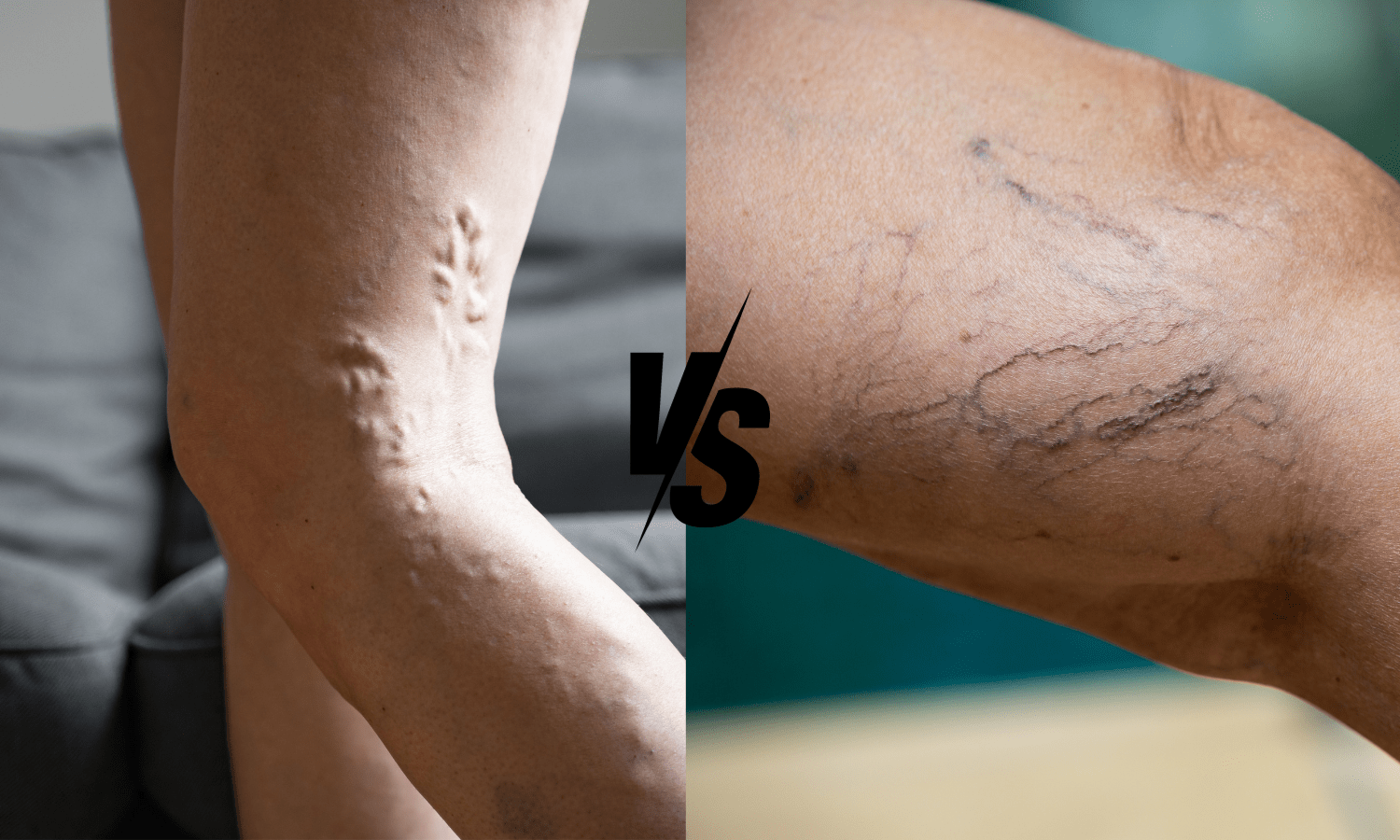What Is The Difference Between Varicose And Spider Veins?
Are you curious about the differences between varicose veins and spider veins? Many people notice these distinct vein types on their legs or other body parts, but understanding what sets them apart is crucial for proper care and treatment. In this blog post, we'll explore what varicose and spider veins are, how they differ, and why knowing the difference matters for your health and well-being.
What are Spider Veins?
Spider veins, medically known as telangiectasias, are small, damaged blood vessels visible just beneath your skin’s surface. These veins often present as thin, red, blue, or purple lines and may appear in clusters resembling spider webs or tree branches. Spider veins can develop anywhere on your body but are commonly found on legs and face. While mostly a cosmetic concern, they rarely cause symptoms such as itching or burning, especially in the legs.
What are Varicose Veins?
Varicose veins, in contrast, are larger, swollen, and twisted blood vessels that bulge under the skin. They typically appear blue or purple and are most prevalent in the legs, feet, and ankles. Unlike spider veins, varicose veins can be painful or itchy and are not merely a cosmetic issue. In some cases, severe varicose veins may lead to significant health problems, including blood clots.
Causes and Risk Factors
Both spider and varicose veins stem from similar causes and risk factors. These include hormonal changes, genetic predispositions, extended periods of standing or sitting, obesity, and exposure to the sun. Additionally, for varicose veins, factors like aging, which affects the elasticity of vein walls, and lifestyle choices like tobacco use can contribute to their development.
Symptoms and Diagnosis
While spider veins are typically symptom-free, a small number of individuals may experience discomfort after prolonged standing. Varicose veins, however, can lead to symptoms like heavy, aching legs, muscle cramps, and swelling. Diagnosing these conditions usually involves a physical examination and, in some cases, an ultrasound to assess the veins' health and rule out other complications.
Treatment Options
Treatment for spider veins includes sclerotherapy and laser therapy, focusing on cosmetic improvement. Varicose veins, due to their more severe nature, may require more intensive treatments like elevation, compression therapy, and in some cases, surgery. It's essential to discuss with healthcare providers to determine the best course of action.
Prevention and Management
Preventative measures for both conditions are similar. They include regular exercise, maintaining a healthy weight, avoiding long periods of standing or sitting, and wearing properly fitting clothing. For varicose veins, additional measures like using compression stockings can be beneficial [2].
Complications and Long-Term Outlook
Untreated spider veins rarely lead to complications. However, varicose veins can cause ulcers, bleeding, and skin discoloration if not managed properly. The long-term outlook for varicose veins is generally positive, though they may recur after treatment.
Ready to Take the Next Step?
Understanding the differences between spider and varicose veins is crucial for effective treatment and management. While both are vein-related issues, their causes, symptoms, and treatment vary significantly. If you have concerns about your vein health or are considering treatment options, don't hesitate to reach out to our specialists at Indiana Vascular. Our team is dedicated to providing personalized care and effective treatment solutions. Schedule an appointment with us today to ensure your vein health is in the best hands. Remember, consulting healthcare professionals is always the best approach to managing your health.
References
Cleveland Clinic. (n.d.). Spider Veins: Causes, Symptoms & Treatment. Retrieved from https://my.clevelandclinic.org/health/diseases/24567-spider-veins
Cleveland Clinic. (n.d.). Varicose Veins: Causes, Symptoms and Treatment. Retrieved from https://my.clevelandclinic.org/health/diseases/4722-varicose-veins

